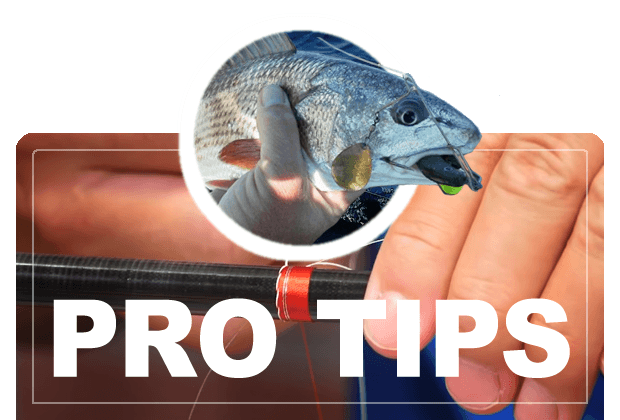How to Build Your Own Custom Fishing Rods (Part 1)
In 1984 my favorite fishing rod manufacturer went out of business. I tried several different companies, but was not totally satisfied with their products. Eventually, I found a book written by the legendary Dale Clemens, “Advanced Custom Rod Building”. Of course in 1984 Mr. Clemens was not legendary but was one of the few and the best to put the subject in print. If you can find a copy of his book, I highly recommend it as a starting point. Subsequent books have been written by Dale Clemens and others; but after learning the basics, experience becomes the best teacher. In fact, I actually teach custom fishing rod building and my contact information is below. For now let’s begin the process.
First you need some beginning tools; and I do mean beginning. I started out with a spool of thread on a pencil. My wife would sit on the floor and apply tension to the spool while I turned the rod blank wrapping the guides onto the rod. This is not the way I would recommend. It can promote marital problems. Many of the rod component suppliers sell “entry level” wrappers. These will do the job if you are not ready to buy a power wrapper. You will need some fine snips to cut thread, a burnisher to pack or tighten your thread wraps, and for applying epoxy finish two or three rod supports. NOTE: A POWER WRAPPER IS RECOMMENDED TO IMPROVE THE PRECISION OF YOUR THREAD WRAPS AND APPLYING/CURING ROD EPOXY.
Now you need a blank. Simply put the blank is your fishing rod without any components. Today, the most popular blanks are graphite. This material adds strength and sensitivity. Blanks are categorized not only for the fish you are pursuing but also in line weights. For example, if you wanted to build a rod for flounder fishing, you might choose a seven foot graphite blank in the 8-14 pound class. On the other hand, a rod built for king mackerel might be seven feet long and 12-25 pound class. There are length and line class ratings for just about any fishing scenario. Fiberglass is another material used for rod blanks. While it is seldom used today, there are still applications where fiberglass is preferred by many anglers. Once you have chosen your blank you should determine the spline. This is considered the strongest side of the blank. NOTE: THE OLD WORD SPLINE HAS EVOLVED INTO THE MUCH EASIER MEANING SPINE. The spine is on the outer curve of the rod. You can usually sight this by looking from the butt end toward the tip. On spinning rods I like to put my guides on the INSIDE of the curve and on casting rods the OUTSIDE of the curve. The reel seat obviously will be on the same side as the guides.
The next step after determining the spine is to put the grips and reel seat on the blank. Leaving room for the butt cap, the order of installation is butt grip, reel seat and fore grip.
This seems to be a good place to stop for now. Come back soon for the next installment on “How to Build Your Own Custom Fishing Rods”. Questions or comments please see below contact information.
Good Fishing!
Capt. Rick Bennett, Ret.
www.rod-man.com
A lifetime fisherman, Capt. Rick Bennett, better known as the Rod-Man,has retired from the day to day activities as a charter boat captain but does offer “ON YOUR BOAT” Guided Fishing Trips. Capt. Rick will show you the when, the where and the how. From rod and reel selection to terminal tackle to bait, Capt. Rick has the know how.
- Choosing the right fishing line
- Better Casting Can Mean More Caught Fish
- Saltwater Fishing late May and into June
- Flounder from an Artificial Perspective
- Local Carolina Beach fishing in the month of April
- How to Build Your Own Custom Fishing Rods (Part 5)
- How to Build Your Own Custom Fishing Rods (Part 4)
- How to Build Your Own Custom Fishing Rods (Part 3)
- How to Build Your Own Custom Fishing Rods (Part 2)
- Surf Fishing Carolina Beach, North Carolina (Part 2)
- Surf Fishing Southeastern North Carolina (Part 1)
- Exciting shark fishing for everyone.
- Fishing for Mahi-Mahi
- “Specialty” Gear for Inshore Fishing
- Fishing for Spanish Mackerel
- Cobia fishing trips and tips, hard fighting, good eating
- Fishing tips on how and where to catch Black Drum
- How to catch Speckled Trout fishing tips and tricks
- How to catch Flounder, flounder fishing tips and tricks
- How to catch redfish, red drum fishing tips and tricks
- Reds and trout and some flounder are biting on artificials
- Atlantic bonito have been caught at the near shore AR’s. Bluefish have been plentiful.
- The wahoo bite is good and some blackfin tuna and sailfish are in the mix.
- Kings are still way out, but the Gulfstream is producing wahoo and blackfin tune.


